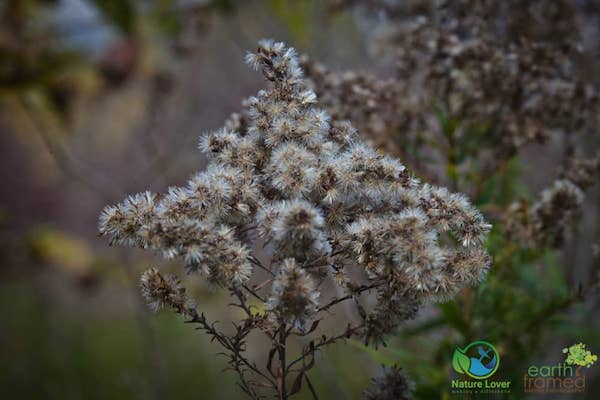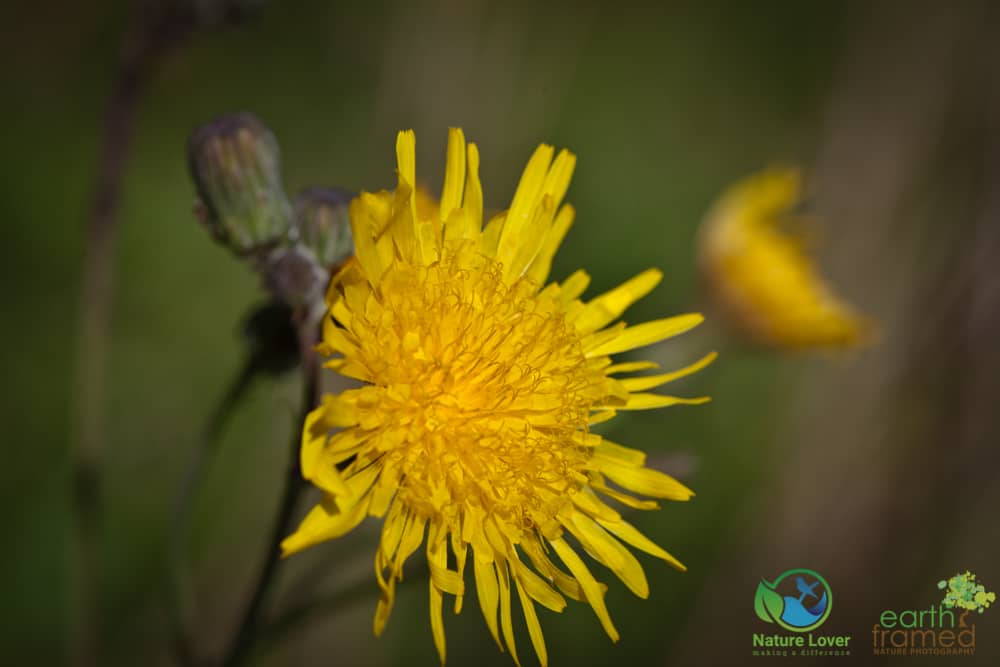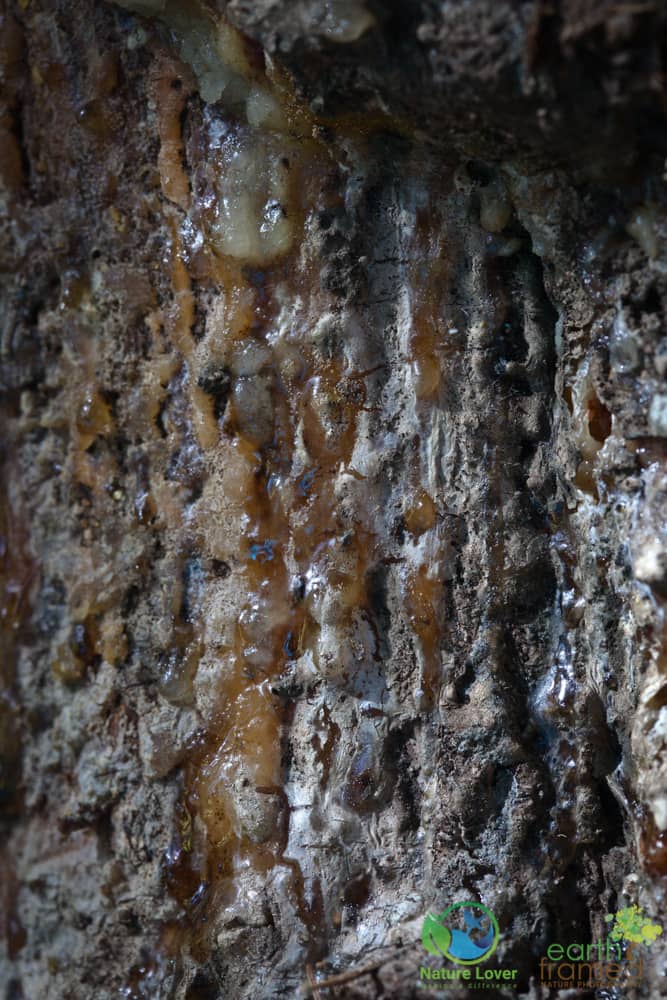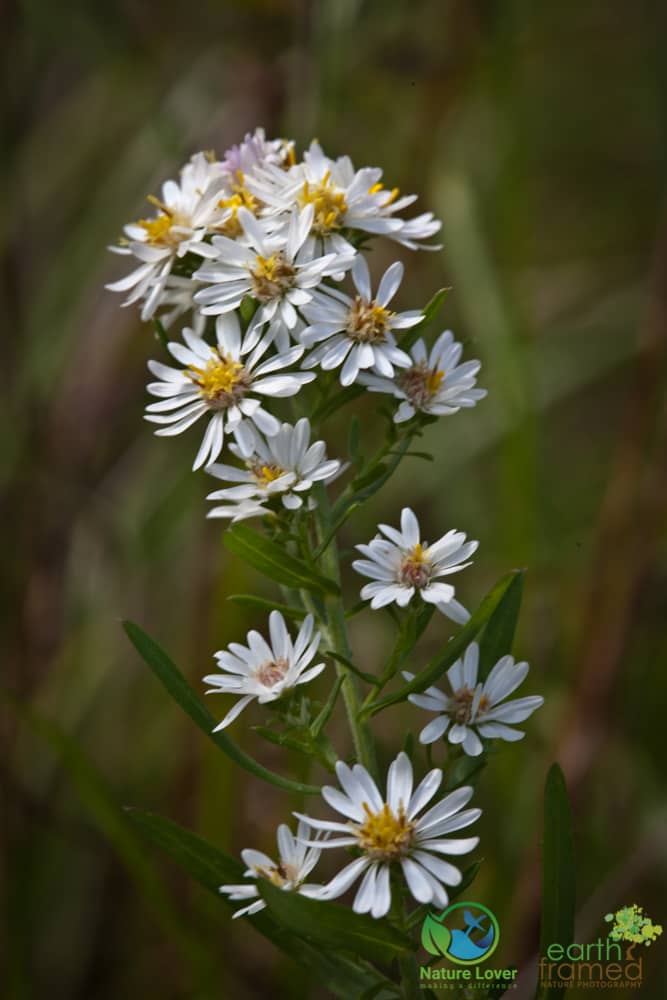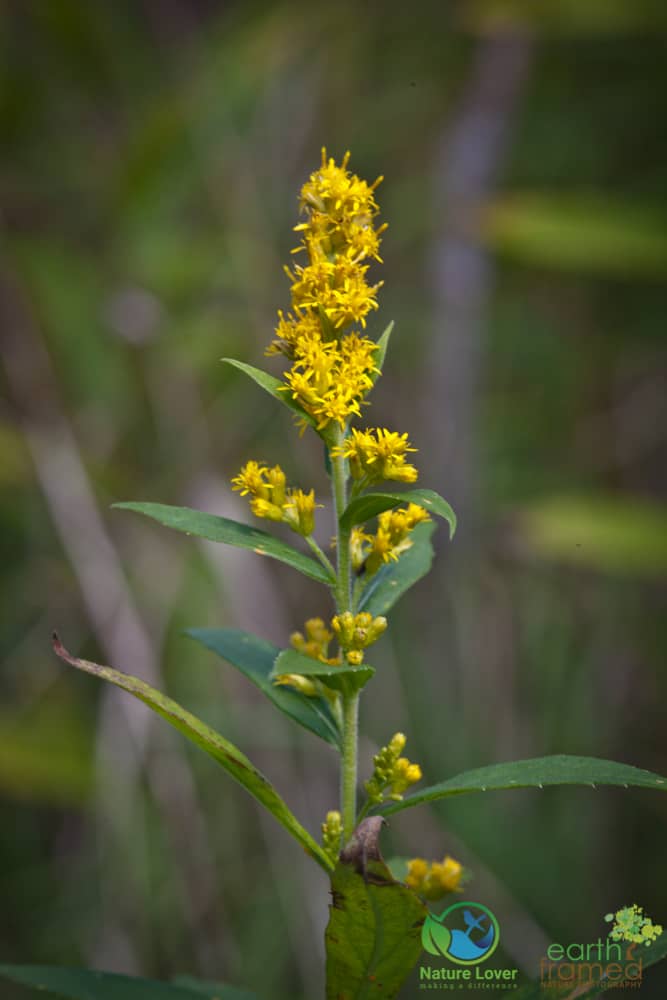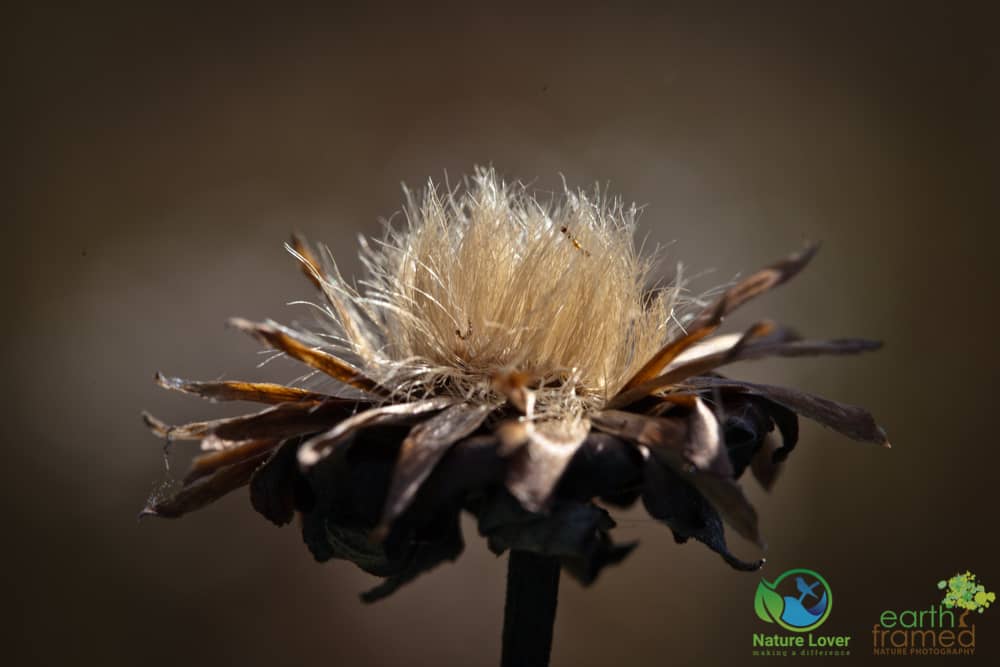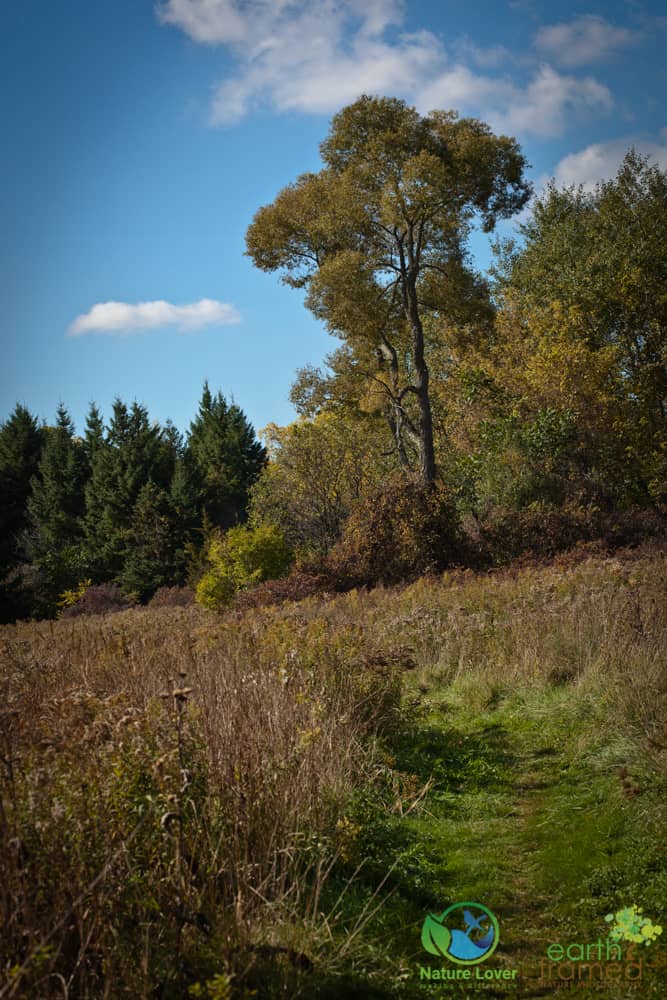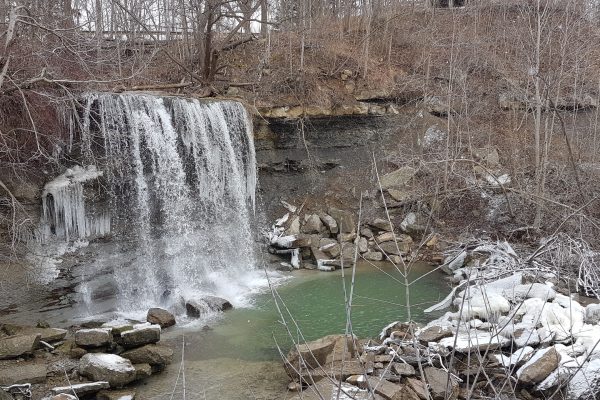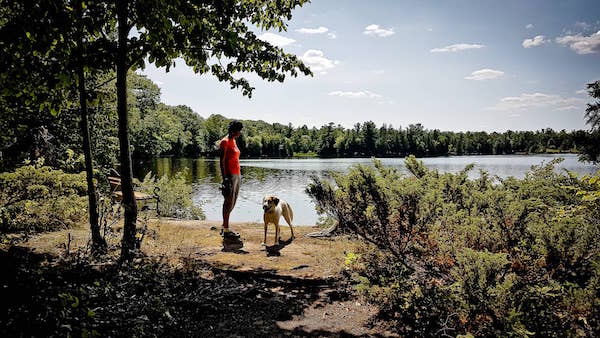Fall is a beautiful time of the year. Trees are changing to yellows, oranges and reds while wildflowers are finishing off their blooming seasons and turning to seed. Insects are still very active at this time of year and grasshoppers, in particular, were especially abundant during my mind October walk through Bridgeview Conservation Area in Petrolia, Ontario.
The weather is cooling, the mosquitoes are decreasing while the sights and sounds are changing all around us. This is a wonderful time of year to spend more time outside and to explore nature.
You might mistake this plant for a dandelion but it is actually a sow thistle. These plants aren’t native but they are very common. They belong to the sunflower family, like dandelions do, but grow much taller, which is your first hint that it isn’t a dandelion.
On one of the trails that you’ll find at Bridgeview, you will walk through a small pine forest. Above you can see pine sap which is a very useful material for treating wounds, waterproofing, making torches, and starting fires.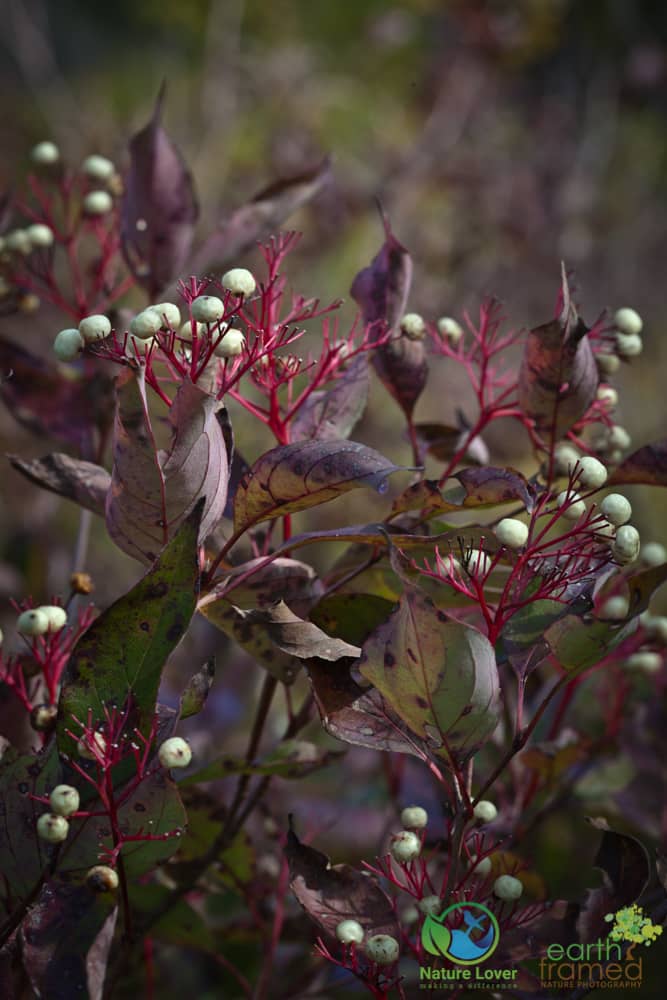
I came across several of these Gray Dogwoods. Their leaves had started to change and many had already been visited by birds. You can see a large number of the white berries have already been enjoyed by local or migrating song birds.
Learning to identify the numerous types of white asters in Ontario is a huge task. Experts recommend that you do not use the Peterson’s or Newcombe’s field guide to try because they will just confuse you since only some of them listed are found in Ontario. If you are photographing flowers, trees, shrubs, ferns or anything else in nature, it is best to take a variety of images, depending on the subject matter. For asters I should have taken a picture of the whole plant, the leaves, an up-close of the stem, the phyllaries (the base of the flower ‘cap’) and then an up-close shot of the flowers.
Many white asters are still blooming in the Autumn, making it even more difficult.
This late blooming goldenrod is very beneficial to pollinators. Goldenrods are another plant that can be difficult to identify. Sometimes I find it best to start off with the type of goldenrod it isn’t and then go through what is left. As with the asters, the more images you take with identification in mind, the more likely you can identify a wildflower when you get home.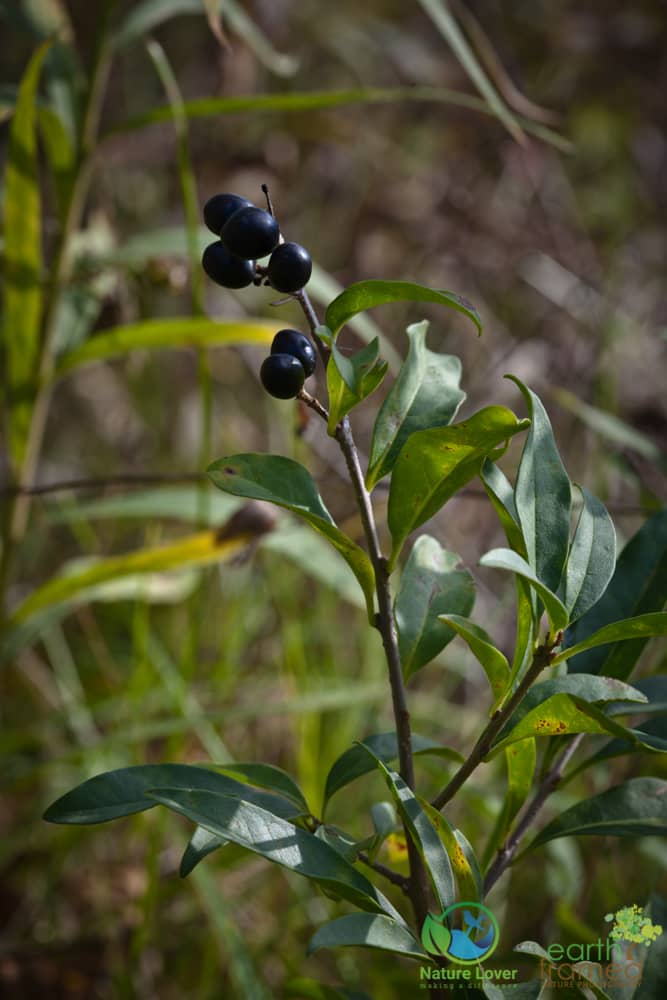
Many trees and shrubs are covered in berries right now and some will still have fruit even in the winter.
Many plants have completely dried up and gone to seed. The wind and birds will transport these seeds to various locations.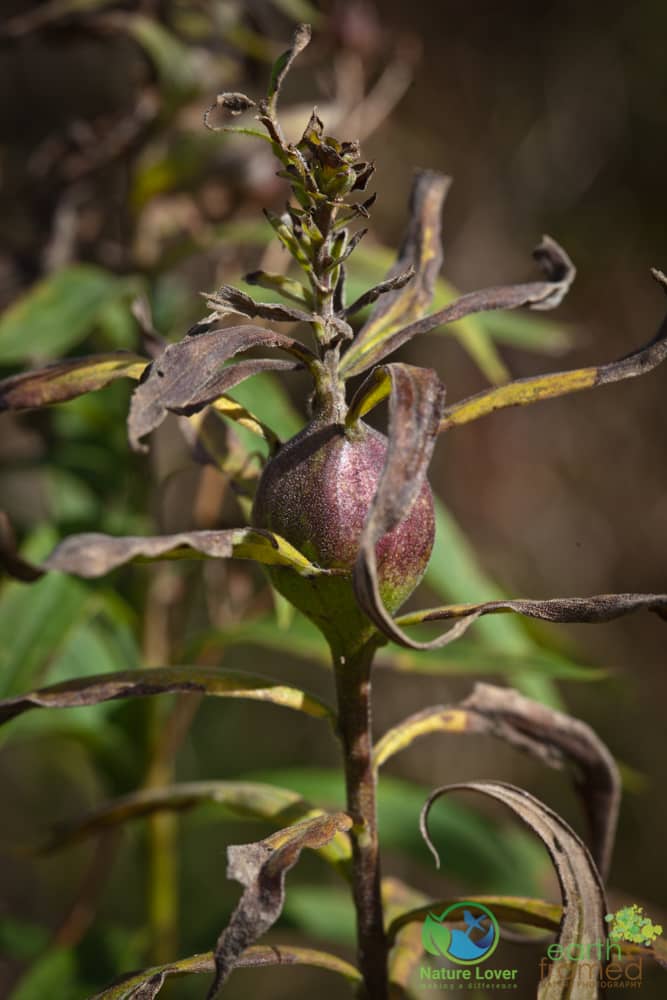
You will find these galls on many goldenrods almost everywhere you go. These are the home of Goldenrod Gall Fly eggs that were injected into the stem of the goldenrod. The abnormal growth isn’t caused by the injection, but from the saliva of the larvae that hatch the following spring. As the larvae eats the inside of the gall, it will grow larger until it is about the size of a golf ball, like the one above. The larvae will stay in the gall for an entire year before they become adults. An adult Goldenrod Gall Fly only lives two weeks.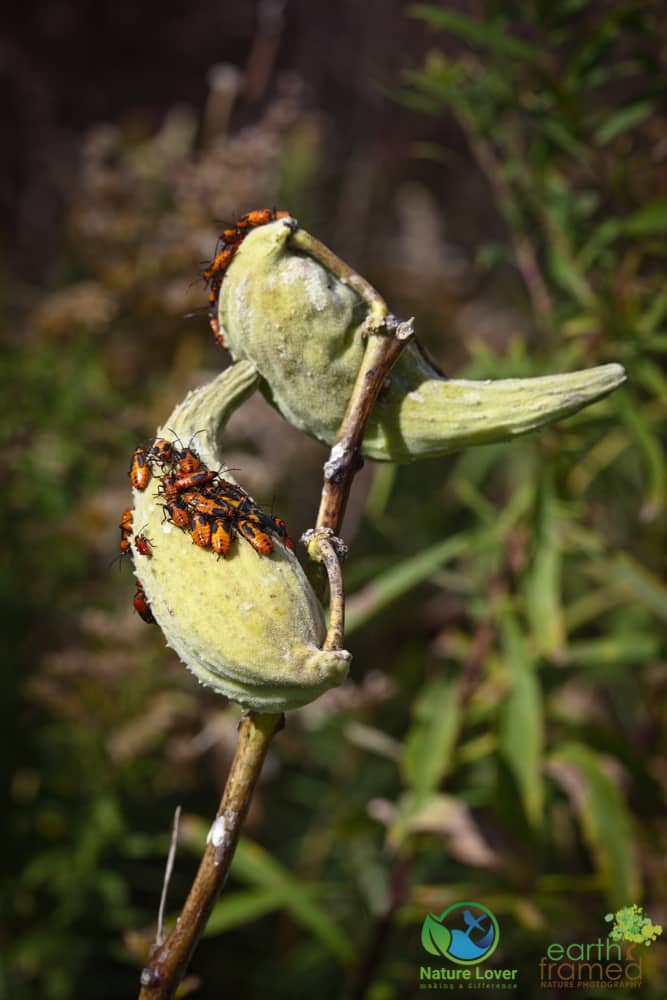
If you have milkweed in your yard, or have seen some on your walks through parks that have milkweed, you have probably come across these bugs – the Large Milkweed Bug. The ones above are actually in one of their growing stages (called instars) and they will progress through various sizes, colours and physical developments. Although they prefer milkweed, these bugs can also survive and procreate on sunflowers, watermelon and cashew, to name a few other potential host plants.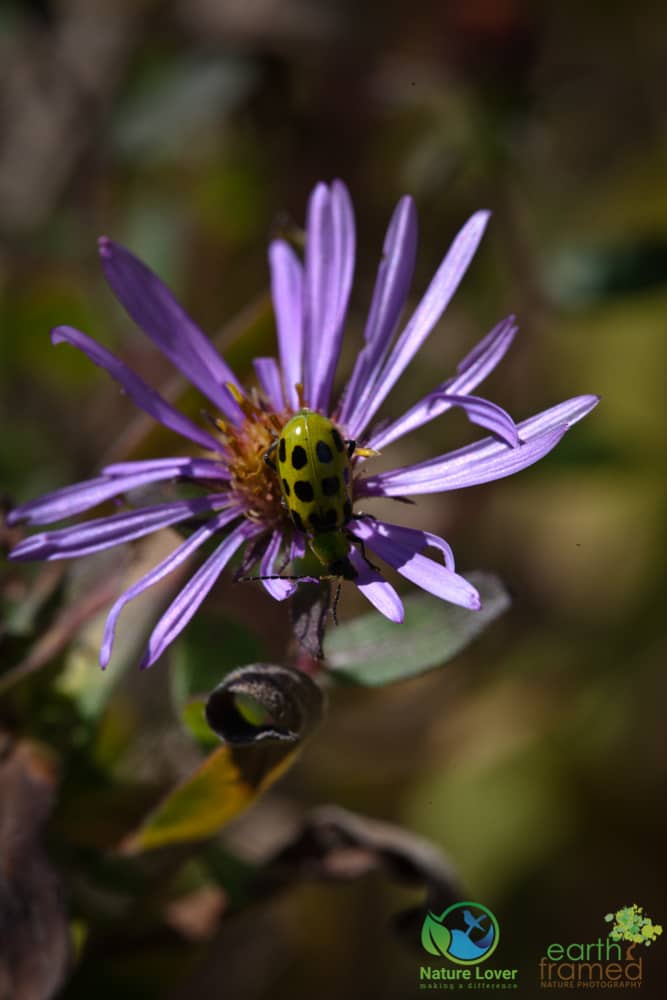
This gorgeous lime green beetle was spotted on a Purple-stemmed Aster. This is a Spotted Cucumber beetle and it is native to North America. Farmers consider this to be a pest since it can infest a field of crops in its larval form (which is called the southern corn rootworm). 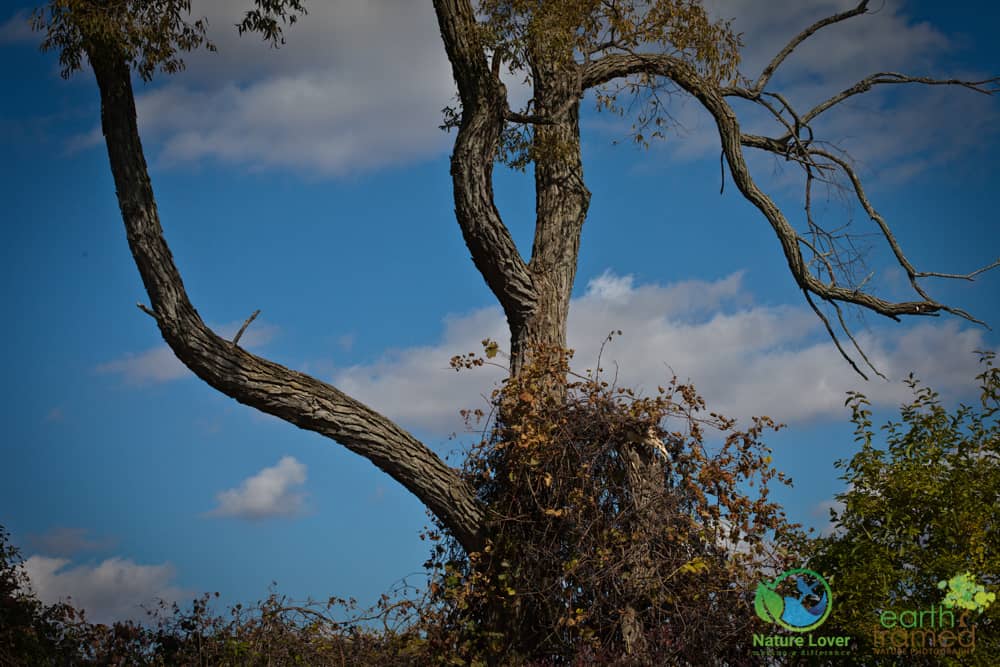
It was a beautiful day for a walk, with a warm breeze and blue skies. 
In the praire section of the park you can find grasses of all shapes and sizes.
Before grabbing my camera I had with a walk through the trail with Maya. While I was walking with her, we had to avoid stepping on a number of these Woolly Bear Caterpillars. When I grabbed my camera and headed back to capture a shot of one, I had a hard time even spotting this one at the edge of the path. The adult is the Isabella Tiger Moth.
A flower does not need to be blooming and colourful to be beautiful.
This is the path through the prairie area of the park. We often spot deer off in the distance. This is a fantastic spot to try to photograph butterflies, which come for the wide range of wildflowers that grow here throughout the summer.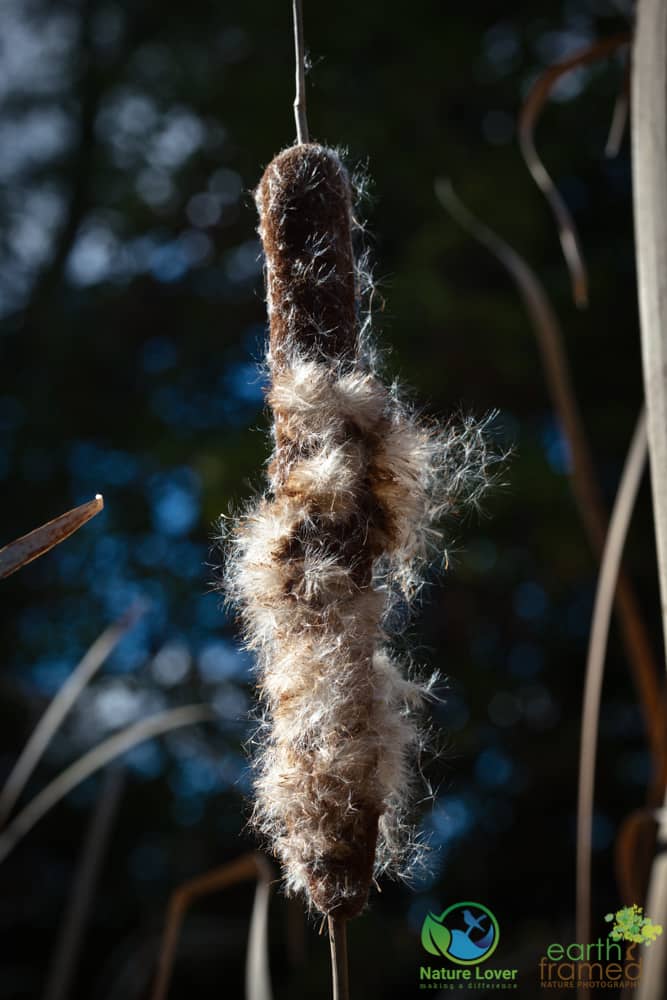
There is an area that often sits underwater in the spring and after heavy rainfalls. This area is home to Narrow-leaved Cattail. Here you can see the seed head of one of them that has already started to degrade and shed its seeds in the wind. 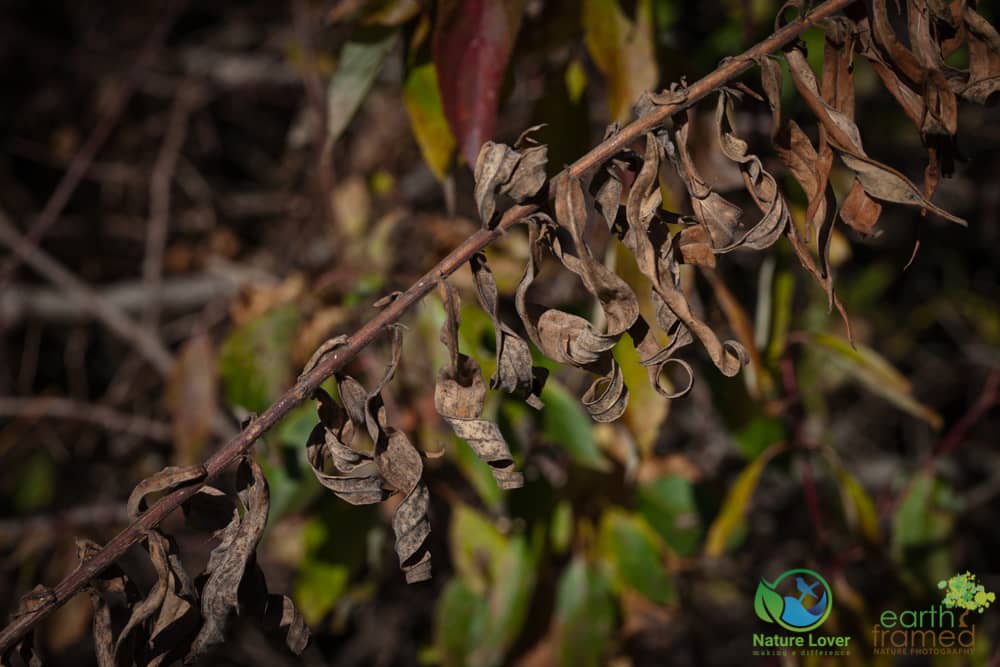
Some leaves will curl while they wither and die, which I think makes an interesting image to capture, if the light is right.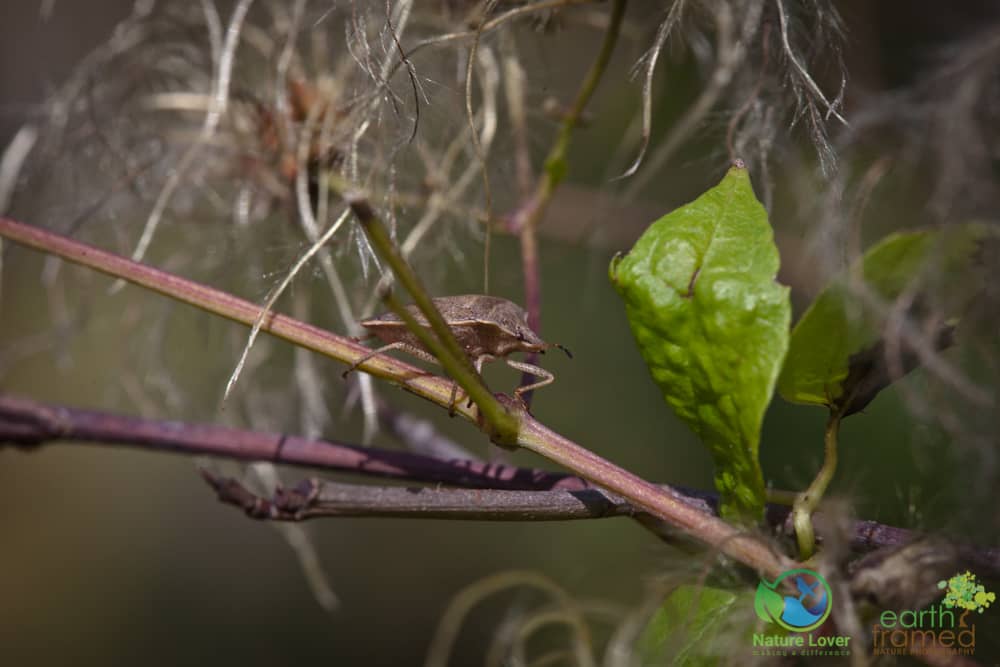
I have actually spotted quite a few of these little guys in our garden at home. This is a Spined soldier bug, which is common in North America. It is considered to be a beneficial species since it attacks plant pests.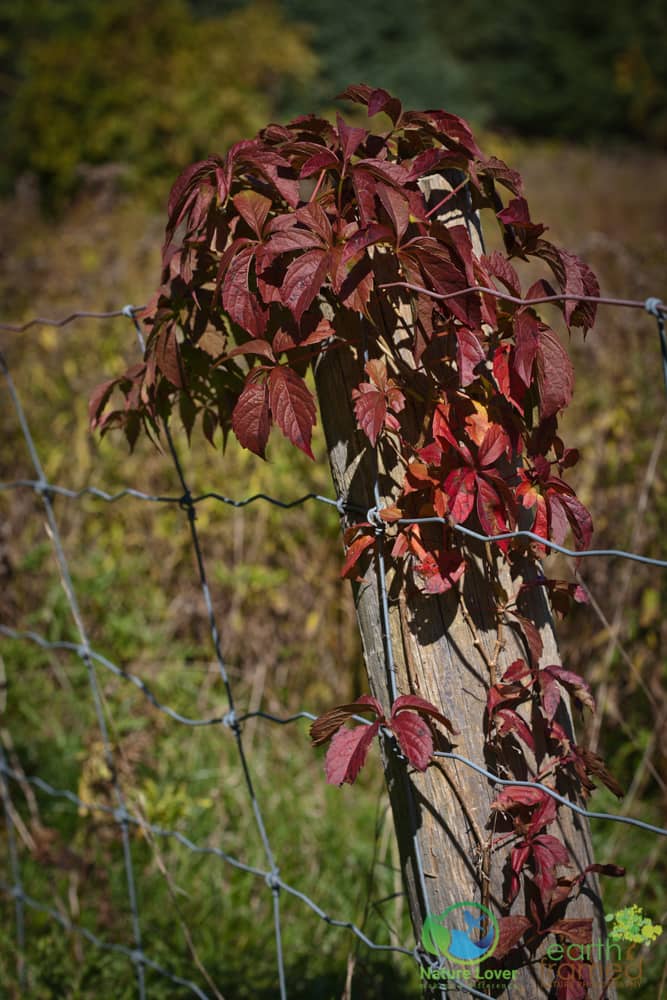
Many of the vines growing up trees and fences have either started or have completely changed colours for the season. This one was growing up a post at the ‘dog park’ area of Bridgeview (I use the term ‘dog park’ loosely since it is a sad attempt at a necessary area.)
 Butter-and-eggs is a non-native plant that I found in one area during this walk. They have a similar flower shape to Snap Dragons and are very common throughout North America.
Butter-and-eggs is a non-native plant that I found in one area during this walk. They have a similar flower shape to Snap Dragons and are very common throughout North America.
Have you visited your local Conservation Area lately? Which ones are your favourites?
Sources:
@SurvivalSherpa. “16 Uses of Sticky Pine Sap for Wilderness Survival and Self-Reliance.” Survival Sherpa. N.p., 23 Oct. 2015. Web. 17 Oct. 2016.
“Goldenrod Gall Fly.” Goldenrod Gall Fly. N.p., n.d. Web. 17 Oct. 2016.
“Species Oncopeltus Fasciatus – Large Milkweed Bug.” Welcome to BugGuide.Net! – BugGuide.Net. N.p., n.d. Web. 17 Oct. 2016.


